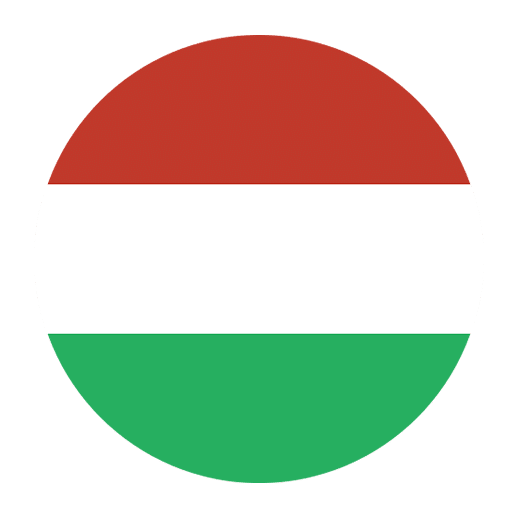Hungary, a country with a rich tapestry of history and culture, has a unique linguistic heritage that reflects its storied past. The Hungarian language, or Magyar, is unlike any other in Europe, belonging to the Finno-Ugric language family. This article delves into historical terms and vocabulary in Hungarian, providing insight into the words that have shaped the nation’s identity and how they can enrich your understanding of the language.
Historical Context and Influence
Hungary’s history is marked by waves of migrations, invasions, and cultural shifts. Each of these periods left an indelible mark on the language. The Hungarian language itself is ancient, dating back over a thousand years. The following sections explore some key historical periods and their linguistic contributions.
The Early Magyar Tribes
The origins of the Hungarian people trace back to the Magyar tribes who migrated into the Carpathian Basin around the 9th century. The early vocabulary from this period reflects their nomadic lifestyle, social structures, and interactions with other tribes. Here are some notable terms:
– **Fejedelem**: This word means “chieftain” or “leader” and was used to denote the head of a tribe. It is a term steeped in the ancient social hierarchy of the Magyar tribes.
– **Törzs**: Meaning “tribe,” this term highlights the tribal organization of early Hungarian society.
– **Falu**: Translating to “village,” this word indicates the basic unit of settlement for the nomadic Magyars.
The Christianization and the Kingdom of Hungary
In the year 1000, Hungary’s first king, Saint Stephen I, adopted Christianity, which had a profound impact on the language. The establishment of the Kingdom of Hungary brought new religious and administrative terminology.
– **Király**: This word means “king” and is derived from the Old German word “König.” Saint Stephen I was the first to hold this title in Hungary.
– **Püspök**: Meaning “bishop,” this term became important as Christianity spread and the church established its hierarchy.
– **Templom**: Translating to “church,” this word reflects the construction of religious buildings across the country.
The Ottoman Occupation
From the 16th to the 17th century, Hungary was partially occupied by the Ottoman Empire. This period introduced numerous Turkish words into the Hungarian lexicon, many of which are still in use today.
– **Kávé**: Meaning “coffee,” this word was introduced during the Ottoman occupation and has remained a staple in Hungarian culture.
– **Papucs**: Translating to “slippers,” this term also came from Turkish influence.
– **Bazár**: Meaning “bazaar” or “market,” this word reflects the bustling markets that were common during Ottoman rule.
The Habsburg Era
Following the Ottoman period, Hungary came under Habsburg rule. This era saw the introduction of many German words into the Hungarian language, particularly in administration, military, and trade.
– **Császár**: This word means “emperor” and is derived from the German “Kaiser.” It was used to refer to the Habsburg rulers.
– **Garnizon**: Meaning “garrison,” this term reflects the military presence established by the Habsburgs.
– **Mester**: Translating to “master,” this word was used in various trades and professions, influenced by the German “Meister.”
Revolution and Independence
The 19th century was a period of national awakening and revolution in Hungary. The 1848 Revolution, led by figures such as Lajos Kossuth, aimed at achieving independence from Habsburg rule. This period also saw a resurgence in the use of Hungarian language and culture.
– **Szabadság**: Meaning “freedom” or “liberty,” this word became a rallying cry during the revolution.
– **Nemzet**: Translating to “nation,” this term reflects the growing sense of national identity and unity.
– **Forradalom**: Meaning “revolution,” this word encapsulates the spirit of the 1848 movement.
The Austro-Hungarian Compromise
In 1867, the Austro-Hungarian Compromise (Ausgleich) created the Dual Monarchy of Austria-Hungary. This period saw significant administrative and political changes, as well as the introduction of new vocabulary.
– **Kiegyezés**: This word means “compromise” and specifically refers to the 1867 agreement between Austria and Hungary.
– **Parlament**: Translating to “parliament,” this term became crucial as Hungary gained more political autonomy within the dual monarchy.
– **Miniszterelnök**: Meaning “prime minister,” this word reflects the new political offices established during this period.
The World Wars and Soviet Era
The 20th century brought two world wars and a significant Soviet influence post-World War II. These events introduced a range of new terms related to politics, military, and ideology.
– **Háború**: This word means “war” and became all too common during the turbulent 20th century.
– **Szovjet**: Translating to “Soviet,” this term reflects the influence of the Soviet Union on Hungary after World War II.
– **Párt**: Meaning “party,” this word was frequently used in the context of the Communist Party’s control over Hungary.
Modern Hungarian Vocabulary
In contemporary Hungary, the language continues to evolve, incorporating terms from global interactions, technology, and cultural exchange. Here are some modern terms that reflect these changes:
– **Internet**: The same as in English, reflecting the global nature of technology.
– **Mobiltelefon**: Translating to “mobile phone,” this term is a testament to the ubiquitous presence of mobile technology.
– **Globalizáció**: Meaning “globalization,” this word encapsulates the interconnectedness of the modern world.
Preserving Historical Vocabulary
Despite the influx of modern terms, there is a strong effort to preserve historical vocabulary in Hungary. This is evident in the education system, literature, and media, where traditional terms are still taught and used.
– **Honfoglalás**: Meaning “land-taking,” this term refers to the Magyar tribes’ settlement in the Carpathian Basin and is a fundamental part of Hungarian history education.
– **Ősmagyar**: Translating to “ancient Hungarian,” this term is used to describe the early Magyar tribes and their culture.
– **Nemzeti**: Meaning “national,” this word is often used in the context of preserving national identity and heritage.
Conclusion
The Hungarian language is a living testament to the country’s rich and varied history. From the ancient Magyar tribes to the modern era, each period has contributed to the linguistic tapestry of Hungary. By understanding historical terms and vocabulary, language learners can gain a deeper appreciation for the cultural and historical context that shapes Hungarian today.
Whether you are a beginner or an advanced learner, exploring these historical terms can provide a fascinating insight into the evolution of the Hungarian language. Embrace these words as they connect you to the past, enrich your understanding, and enhance your language learning journey.

